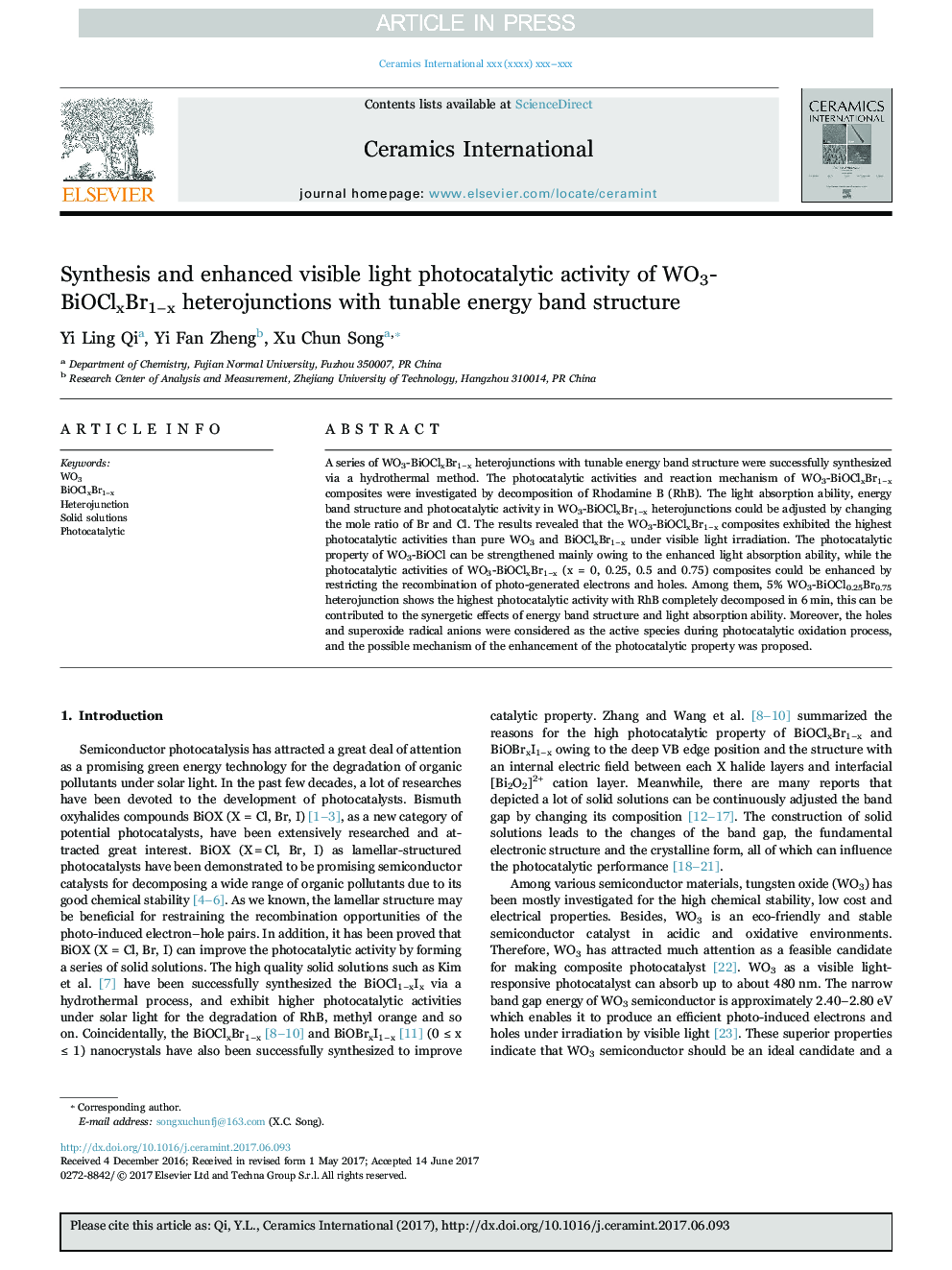| Article ID | Journal | Published Year | Pages | File Type |
|---|---|---|---|---|
| 5437530 | Ceramics International | 2017 | 9 Pages |
Abstract
A series of WO3-BiOClxBr1âx heterojunctions with tunable energy band structure were successfully synthesized via a hydrothermal method. The photocatalytic activities and reaction mechanism of WO3-BiOClxBr1âx composites were investigated by decomposition of Rhodamine B (RhB). The light absorption ability, energy band structure and photocatalytic activity in WO3-BiOClxBr1âx heterojunctions could be adjusted by changing the mole ratio of Br and Cl. The results revealed that the WO3-BiOClxBr1âx composites exhibited the highest photocatalytic activities than pure WO3 and BiOClxBr1âx under visible light irradiation. The photocatalytic property of WO3-BiOCl can be strengthened mainly owing to the enhanced light absorption ability, while the photocatalytic activities of WO3-BiOClxBr1âx (x = 0, 0.25, 0.5 and 0.75) composites could be enhanced by restricting the recombination of photo-generated electrons and holes. Among them, 5% WO3-BiOCl0.25Br0.75 heterojunction shows the highest photocatalytic activity with RhB completely decomposed in 6Â min, this can be contributed to the synergetic effects of energy band structure and light absorption ability. Moreover, the holes and superoxide radical anions were considered as the active species during photocatalytic oxidation process, and the possible mechanism of the enhancement of the photocatalytic property was proposed.
Related Topics
Physical Sciences and Engineering
Materials Science
Ceramics and Composites
Authors
Yi Ling Qi, Yi Fan Zheng, Xu Chun Song,
